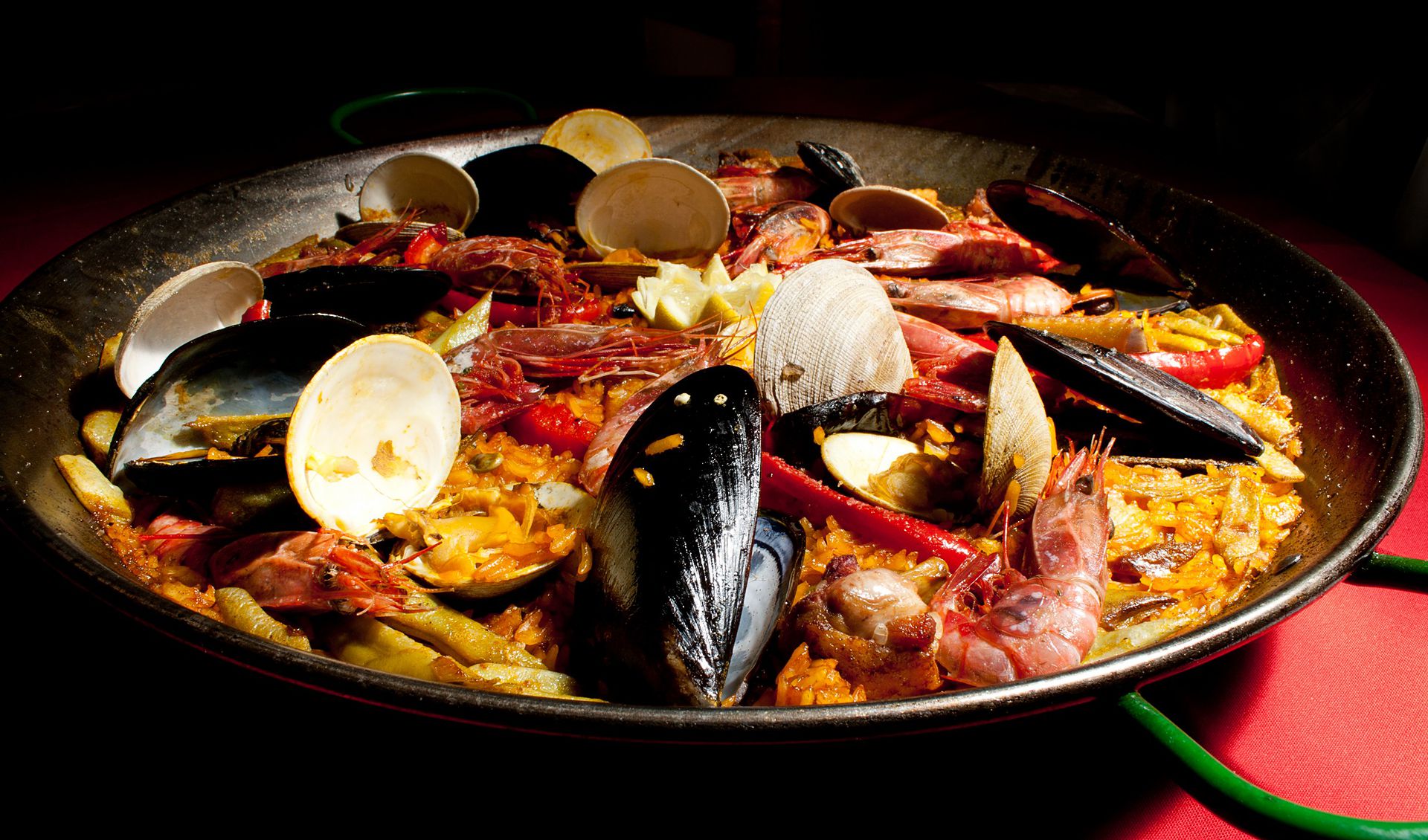Gourmets sing the praises of Spanish cuisine, savouring the names of the dishes as much as the dishes themselves. Jamon, gazpacho, paella — can you feel your appetite whetting? And that's just a tiny fraction of the deliciousness cooked in Spain.
Kidpassage has compiled information on the country's most famous, tastiest and healthiest dishes. You'll find a list of delicacies and meals kids will love.
Contents
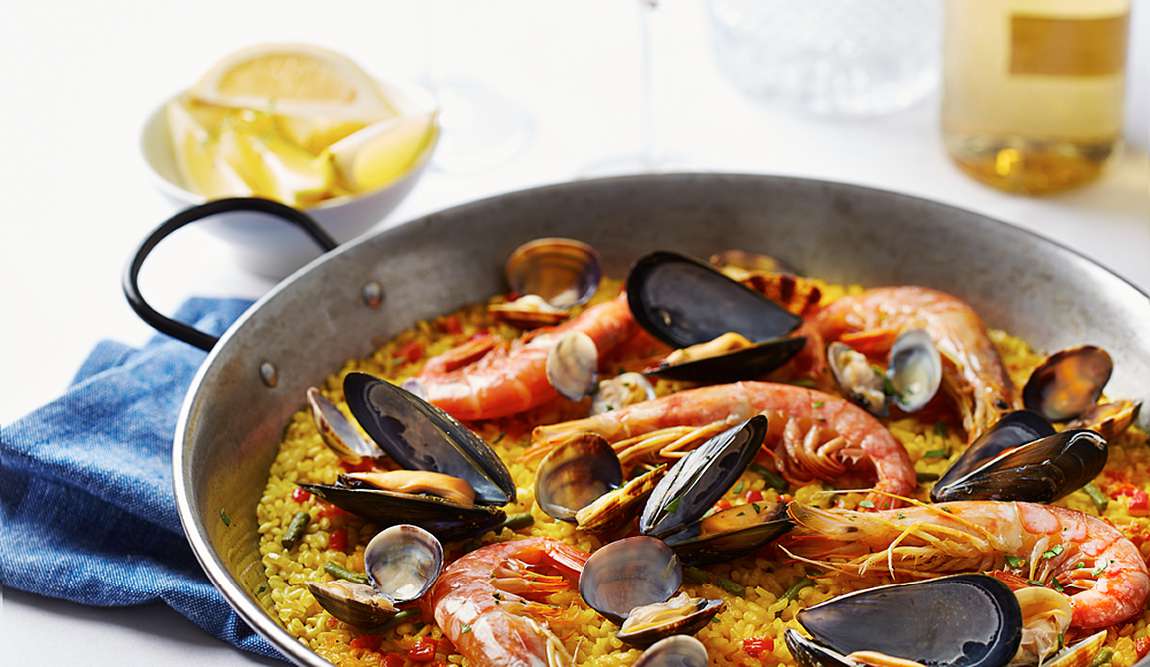
Specifics of Spanish national cuisine
The cuisine of Spain has absorbed the culinary contributions and adaptations of the Arabs, Italians, and Greeks. It has taken much from the gastronomic preferences of the peoples of North-West Africa and America. You can learn the country's history from its culinary borrowings... but you still need to eat first. Connoisseurs say that national food in Spain is too generalised an expression, and one should consider the cuisine of each province separately. But it is still possible to note some features.
Seafood, meat, vegetables, cereals, and especially rice are popular on the Mediterranean coast (where most families plan holidays in Spain with children).
Spanish cuisine uses olive oil, herbs and spices, but only some spicy dishes exist. Garlic is a particular favourite — it is probably used to spice up any unsweetened food.
- Family-Friendly Destinations in Spain
- Prices in Spain for Food in Restaurants, Cafes and Supermarkets
Must-Try Dishes in Spain
What is the first thing tourists try in a new country? Of course, gastronomic delights.
Jamón – cured meat in Spain is simply called "ham": this is how the word "jamón" is translated. There are two main types of jamón, the serrano (made from common white-hoofed pigs or other mixed-breed pigs) and the more valuable iberico (made from Iberian black-hoofed pigs with more than 75% of the blood).
One of the peculiarities of the national cuisine is that jamon is added to many soups, meat and vegetable dishes.
Chorizo is a highly seasoned chopped or ground pork sausage. Spanish chorizo is made with garlic and pimentón (Spanish smoked paprika, either sweet or hot), which gives it its deep brick-red color and smoky flavor). Chorizo is used on sandwiches, grilled and added to soups. Other Spanish sausages include morcilla, butifarra, and sobrasada, a sausage made of dried meat.
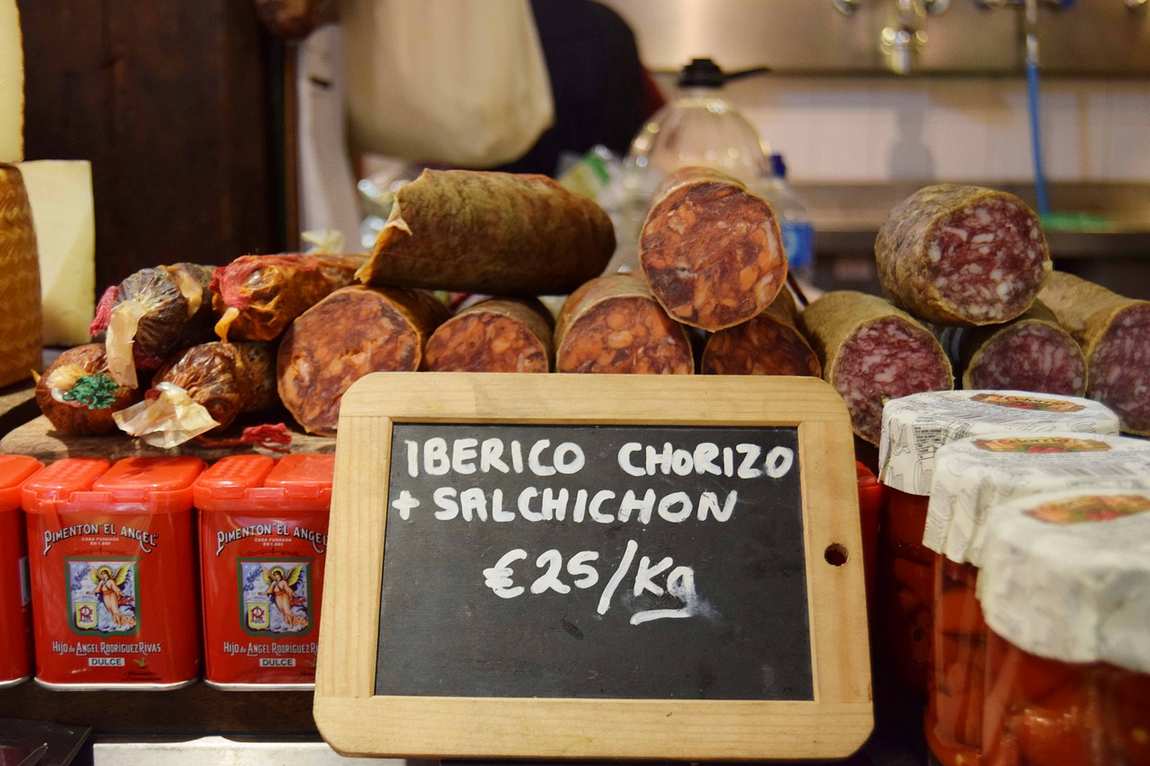
Gazpacho – one of the main dishes in Spain. It's a cold puree soup made from tomatoes and sweet peppers flavoured with olive oil, herbs and garlic. Gazpacho is often served slightly chilled.
Paella – the dish is especially associated with the region of Valencia. Paella is rice with vegetables, seafood or meat. Adding saffron gives the rice an appetising yellow colour (unless you order "black rice" with cuttlefish ink). The famous dish has many variations.
Turrón, or torró – Spain's most famous sweet delicacy. Turrons are made from egg whites mixed with honey and roasted nuts. This treat was prepared only for Christmas in the past, but now it can be purchased and tasted at any time of the year.

Churros are another dessert favourite, crispy biscuits fried in butter. Churros are dipped in hot chocolate or rolled in cinnamon sugar.
Salads and starters for adults and kids
Tapas are snacks traditionally served with beer and wine. The list of tapas is endlessly varied: nuts, olives, sandwiches, fried seafood, jamon, marinated pork, cheese snacks, and meat pies. Tapas can even include small portions of main dishes such as gazpacho or paella.
Pa amb tomàquet is the national dish of Spain and a handy snack for children. It’s made with just five easy ingredients — toasted bread, raw garlic, fresh tomatoes, olive oil and sea salt. You can put cheese or a slice of jamon on this bread. Pa amb tomàquet is particularly popular in the Balearic Islands and Catalonia.
Ajotomate – is again a combination of tomatoes and garlic, but in the form of a salad. Dress the salad with olive oil and sprinkle with herbs.
Ensalada de apio y naranjas – a refreshing vegetable salad with stalk celery and orange slices.
Ensalada malagueña – a salad that can replace a meal. It includes boiled potatoes, orange pulp, onions, olives and dried bacalhau cod.
Ensalada de mar – a seafood salad with mushrooms or capers.
Remojón – orange salad. A popular dessert has the same name, and these dishes differ only in sweetness.
Traditional Spanish soups
There are many different soups among the traditional dishes of Spain. It is common to eat cold soups with ice on a hot day, and in winter, hot, rich soups with meat broth.
Salmorejo – a gazpacho-like soup made in Andalusia. It is made with an egg and finely chopped jamon.
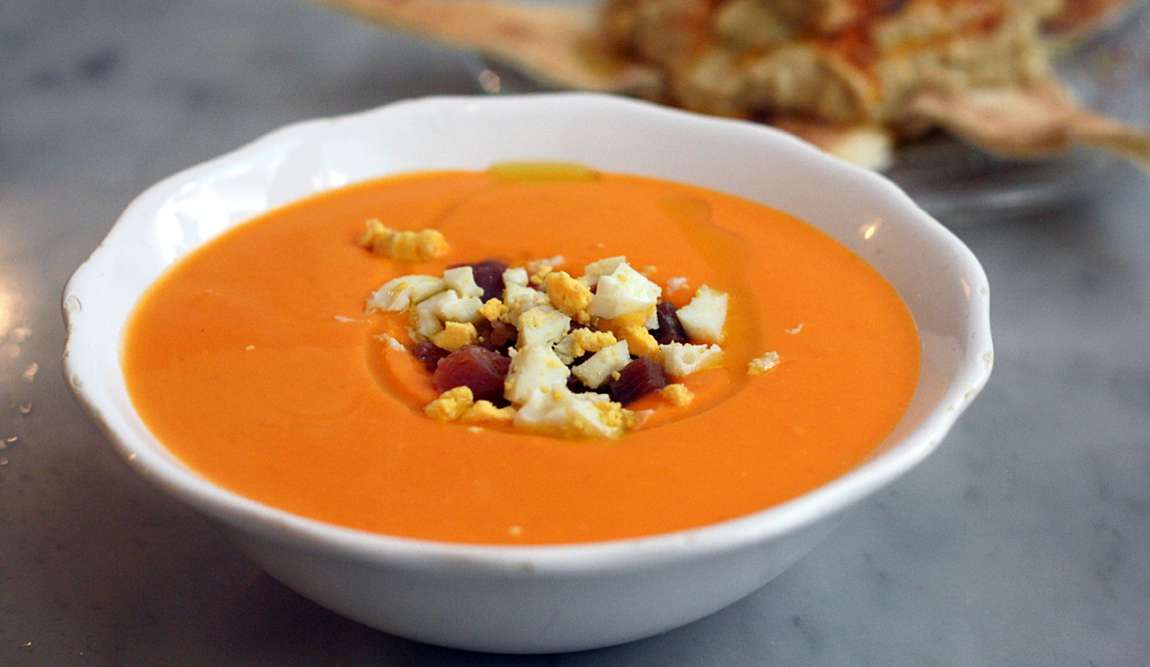
Ajo blanco (also written ajoblanco) is a traditional Spanish cold soup made with almonds. It's often called “white gazpacho". Instead of bread (which is included in the soup), grapes or melon are served with the dish.
Cocido is a traditional stew which combines chickpeas, vegetables, and different types of meat and bones, simmered to achieve a tender texture and a unique flavour. The favourite among tourists is Cocido madrileño, a hot and thick soup popular in Madrid.
Puchero is another hearty stew, more like a second course. It contains several types of meat, jamon, and vegetables. Puchero is served with rice or pasta.
Meat dishes
You'd have a weighty book if you collected meat recipes from every autonomous community in Spain. Meat is loved and cooked in Spain.
Rabo de Toro – braised oxtails. You can imagine Spain without bullfighting, but hardly without this dish.
Ternasco aragonés – Aragonese-style lamb. The stew melts in your mouth.
Fideua is very similar to Spain's other national dish, paella. Only for fideua, instead of rice, macaroni is used. The dish is cooked with meat, seafood and vegetables.
Fabada is the national food of Spain, most commonly found in Asturias. It is a large white bean stew with meat, chorizo and bacon that keeps you warm even on a chilly winter.
Pote Gallego is a fabada-like dish popular in Galicia. It is a meat stew with beans and vegetables served in the pot in which it was cooked.
Chanfaina is a pork or beef liver stew. Wine is used during the preparation of chanfaina.
Albondigas are delicious meatballs with tomato sauce.
Fish dishes
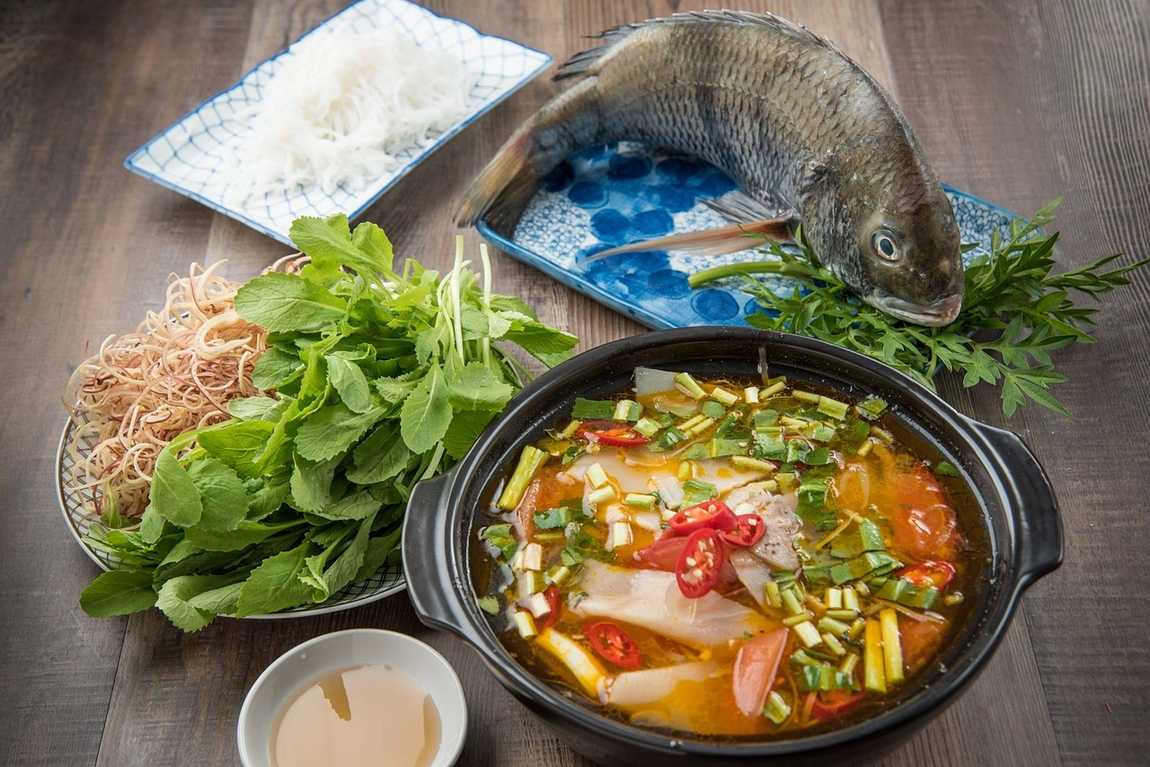
The Mediterranean Sea is rich in fish and shellfish, and restaurant menus are rich in fish dishes. Galicia is particularly famous for its fish dishes. Seafood is fried, stewed, grilled, cooked into soup and added to paella.
Espeto de sardinas – charcoal-grilled sardine.
Espeto de sardinas – sardines cooked over charcoal. Vieiras a la gallega is the Galician way of cooking scallops. It is a gourmet dish, but not really suitable for children.
Polbo á feira, or Pulpo a la gallega – "fair octopus", boiled pieces of octopus. The dish is served on a wooden tray so that the wood can absorb the excess water.
Saldereta de langosta is a lobster soup that is deliciously prepared in Mallorca.
Bacalao al pil pil is a famous cod stew from the Basque Country. The flavour of the fish is extraordinary, but it is served with a somewhat spicy sauce.
Vegetables

Traditional Spanish cuisine makes generous use of vegetables. Vegetable stews are very popular here, although they are also flavoured with sausages and jamon.
Alboronía is a vegetable dish with stewed pumpkin, sweet peppers, tomatoes, aubergines, and sometimes spinach or chard.
Menestra de verduras – a stew of carrots, peas, asparagus, Brussels or cauliflower, and potatoes.
Pisto manchego is another vegetable dish from Spain, with courgettes, tomatoes and sweet peppers being the main ingredients.
In the Canaries, however, there is an original way of cooking potatoes: the special variety papas arrugadas is used to make Canarian potatoes. The tubers are boiled in salted water and baked until a thin salt crust is formed. The dish is served with mojo verde and mojo picon sauces, but the kids love the potatoes with their skin.
Pimientos rellenos – stuffed peppers with an unusual rice filling with tuna and vegetables.
Tortilla de Patatas, or simply Tortilla, is an omelette with potatoes and onions. A portion of such an omelette, and you don't have to eat for half a day.
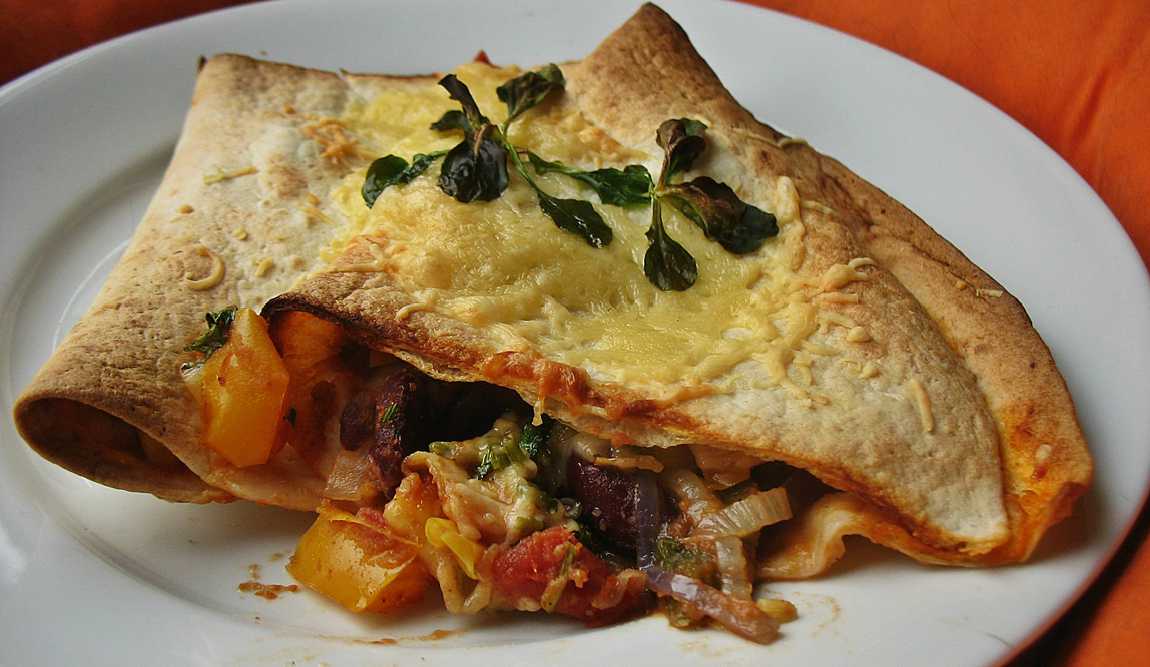
Rice dishes
The waiter will be confused if you ask for rice as a side dish in Spain. Spanish rice dishes are an art form. The main dish of this art is paella, and the rest of the rice dishes are variations.
Arrocería – specialised restaurants where only arroz (rice) is cooked.
- Paella valenciana – the very same paella valenciana, with chicken, rabbit meat and beans.
- Paella de mariscos – paella with seafood.
- Meloso and Caldoso are varieties of paella that do not evaporate all the liquid. It means "brothy rice" and consists of broth (stock) and rice with diverse flavourings and extra ingredients.
- Arroz negro – black rice, the unusual colour given by cuttlefish ink.
- Arroz con conejo y caracoles – rice with rabbit and snails.
Most popular Spanish desserts
Spanish desserts are praised by all tourists, who try to bring back their favourite sweets as gifts. Each autonomous community has its recipes and specialities: you want to try them all.
- Crema catalana – caramel soufflé from Catalonia.
- Bienmesabe is prepared with honey, egg yolk, and ground almonds as primary ingredients. This dessert is very famous in the Canaries.
- Ensaimada is a spiral roll baked in Mallorca.
- Bunyols – doughnuts, which are a favourite in Valencia.
- Flan de naranja is an orange cake, a trademark of Murcia.
- Alfajor – one of the many Andalusian sweets that originated during Arab rule in the Pyrenees. Alfajor is a biscuit glued in pairs with caramel or jam and sprinkled with icing sugar.
- Polvorón is an invariable Christmas and New Year's dish, a shortbread biscuit with nuts. Similar to polvoróns is another biscuit, mantecado, which used to be made with pork lard, but now olive oil is added to the dough.
- Roscón de Reyes – "Roscón of kings", a large bagel made of yeast dough, decorated with candied fruits and crushed nuts. This speciality in Spain is baked on 6 January, the feast of the three kings.
- Yemas de Santa Teresa – these small orange balls in white confectionery paper are made with egg yolks, sugar, and lemon zest.
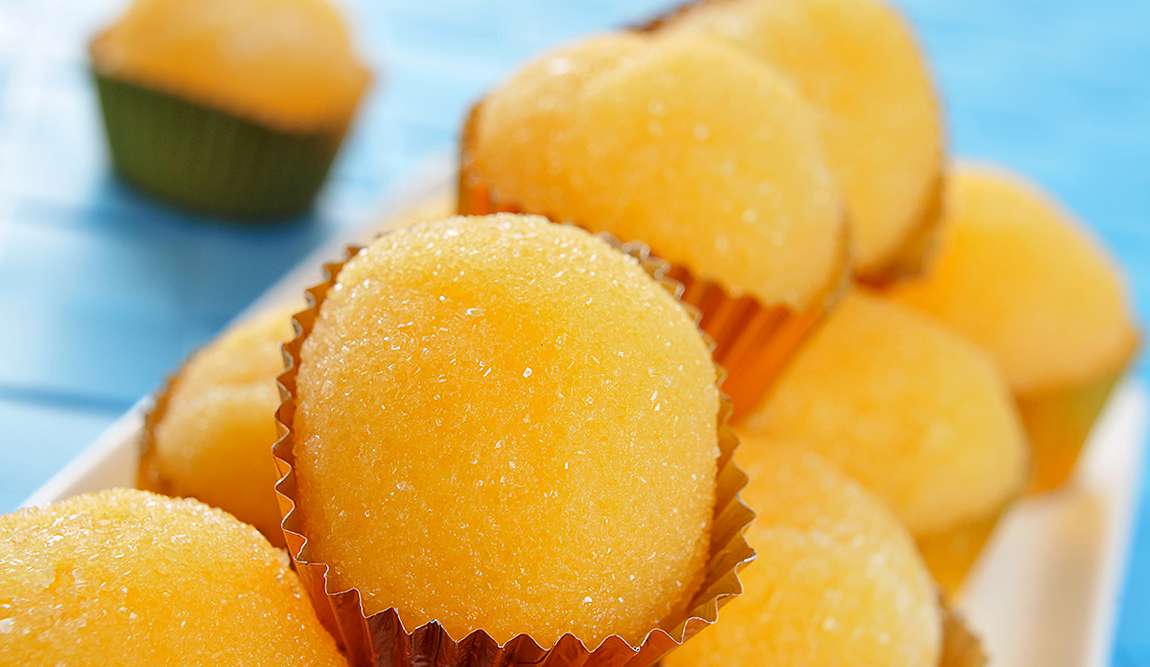
Beverages
Spaniards are fond of coffee and drink it at any time of the day. Café solo, a standard black coffee, is most often ordered. Café con leche and Café cortado are coffee with milk.
Tea in Spanish is Infusion or Té. It's usually on the menu, but you'll probably get tea in a bag when you order. Horchata de chufa is an unusual and healthy drink using ground almonds.
Meanwhile, there's another answer to what to try in Spain: the local wines. Wine regions are located in the north of the country, including Catalonia and in the south, in Andalusia.
- Sherry (Spanish: jerez) is a fortified famous Andalusian wine. Jerez of different varieties, from the dry Fino to the sweet, aged Pedro Ximenez, is of the highest quality.
- Cava is a sparkling wine produced in Catalonia and Valencia. The company's owner, the first to produce cava in the late 19th century, learnt the principles of champanisation from French winemakers.
- Sidra is an apple wine from Asturias. It is necessary to see how this drink is poured in sidererias: from a great height so that the jet touches the edge of the glass.
- Sangría is a drink based on wine with fruit, liqueur, sparkling water and spices. Sangría is most often made based on red wine, but there is also white sangría.
Tips for parents
Popular Spanish dishes are mainly suitable for children; only some products should be excluded or limited. For example, preschoolers should not indulge in jamon, chorizo and other sausages. For this reason, ask for Menestra de verduras and Pisto manchego vegetable stews without jamón, bacon or sausages.
There are also some nuances when ordering soups. Firstly, jamon is often added to soups (especially gazpacho, salmorejo and puchero). Secondly, cold soups are usually served with ice, and it is better not to offer your child such chilled food. Thirdly, when ordering salmorejo, ask for it to be prepared without vinegar.
You should also be careful when ordering meat dishes, as they may contain smoked meat. For example, Fabada beans with meat are cooked with sausages. Some products are stewed in wine — ordering such food for children is not recommended. It applies in particular to liver stew Chanfaina and meatballs Albondigas.
When offering Ensalada malagueña salad to a child, try the dish first. It contains dried and very salty cod bacalhau. Do not offer children mojo picón sauce, as it has hot peppers.
So, how do you feed your child without flipping through menus and looking for healthy and safe dishes? One option is to visit a children's café, which is very popular in Spain.
In Barcelona we recommend visiting Alice Secret Garden cafe, in Madrid – JUNGLEKING - Food Monarchy.
It is essential that Spain has fresh fruit all year round. These include the famous Spanish oranges and exotic fruits such as cherimoya, prickly pear, and guava (as usual, new products should be given to children a little at a time to reduce the risk of allergies).
In Andalusia, children are treated to a very healthy dessert remojón; the main ingredient of orange pulp (a salad with the same name can be unsweetened).
Where to eat
Experienced tourists know that in some countries, local cuisine is adapted to the tastes of tourists. For example, in Thailand, they reduce the amount of hot spices, and in Hungary, they reduce the fat content of products.
But the expression "Spanish cuisine for tourists" is absolute nonsense. Here, nothing needs adaptation: only the original flavour conveys the true passion of Spaniards for food.
Several subtleties affect the price of an order in a restaurant:
- A meal in the restaurant's dining room is cheaper than in an outdoor area;
- Menu del dia set lunches are more favourable than ordering individual dishes:
- If the menu has an IVA next to the price, the total cost on the bill will increase by 7 per cent (i.e. the menu prices are exclusive of VAT). If VAT is already included in the price, IVA incluido will be indicated.
National cuisine restaurants in Spain are typical: most restaurants serve traditional dishes. However, the menus of Catalonia and Andalusia, the Canaries and Mallorca may have almost no overlap, as the cuisine of the regions differs significantly.
You cannot think of anything more Spanish than tapas bars. True, the food there is seen more as a snack, but a child is quite happy with a few sandwiches, a small plate of soup, a small portion of paella, scrambled eggs or a piece of cake.
To have a hearty meal at a tapas bar, you need to order raciones – that is, a large portion.
Tapas bars are crowded and noisy. For this reason alone, with children, it is better to choose family restaurants with a cosy atmosphere.
It should be noted that many museums have excellent restaurants. Traditional Spanish food is prepared in the Arzabal Tavern at the Queen Sofia Art Centre in Madrid, and the NORAI Raval Café at the Barcelona Maritime Museum serves popular Spanish dishes.
In general, restaurants differ only in the level of pomp, presentation and prices, but not in the quality of dishes. It is quite possible to eat with children in inexpensive restaurants, at the entrance to which there is a sign with menus and prices.
It is only worth avoiding restaurants on the beaches and very touristy places. Spaniards themselves say that you can recognise a good restaurant by its smell: the aromas of food should make you drool.
Many non-tourist restaurants in Spain have a siesta and weekend breaks. The siesta can last from noon to 4 pm, but sometimes a restaurant closed for siesta reopens at 20:00-21:00. Weekends are usually on Sunday or Monday.
Sometimes, you need a very early breakfast or a snack during the day. In this case, it is best to go to the market, where cafés open from 6-7 a.m.
You may not even head to a café but to a Charcuterie where they sell jamon, sausages and cheeses. Charcuterie usually serves the most traditional food in Spain – cheese and jamon sandwiches.
If desserts and pastries are your goal, look for a Panaderia (bakery), Pastelería (pastry shop) or Pastisseria (pastry shop).
Wherever you eat, before you eat, wish each other a good appetite in Spanish: "¡Buen provecho!" Such a wish will serve as a key to the secrets of traditional Spanish cuisine.
Do you know where the city of the future is located in Spain and who decorated Barcelona with gingerbread houses and mosaic salamanders? Information about the country's most exciting sights is available in the Kidpassage collection: find out what to see with your child while on holiday in the sunny Spanish resorts.



